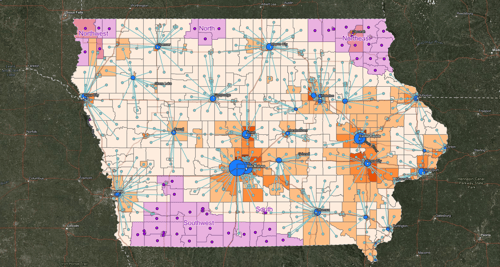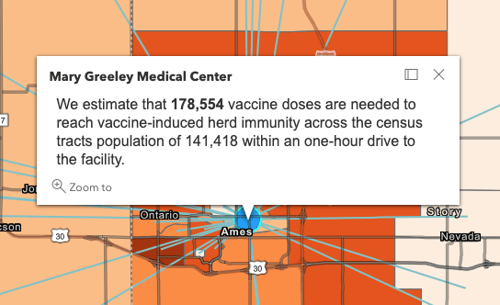How State and Local Governments Can Leverage Data to Plan COVID-19 Vaccine Deployment
“The challenge of vaccine development is matched by the challenge of vaccine distribution. Immunizing the U.S. population against COVID-19 will likely require the single largest vaccination campaign ever undertaken and governors will play a key role in bringing together leaders from their state public health, immunization, and emergency management systems to design and execute the operation.”
— National Governors Association
As COVID-19 continues to spread throughout the United States, state and local governments (SLGs) are preparing to distribute vaccines on an unprecedented scale. The CDC playbook outlines the three phases of deployment SLGs should expect to manage, but there are many key questions left unanswered. SLGs have to plan vaccine distribution with limited information and in the face of significant uncertainty.
When will vaccines be available? In what quantities? With what specifications? At what cost? SLG leaders are understandably concerned about funding, vaccine allocations, supply chains, and communication and information requirements, and are also managing non-pharmaceutical interventions including the opening or closing of schools, bars, and restaurants, and limiting the size of social gatherings. Watch the video below to see former governors Howard Dean (D-VT) and Jim Gerginer (R-WY) discuss the scope of these challenges with Epistemix president Don Burke and Esri chief medical officer Este Geraghty.
How can SLGs identify and execute the optimal COVID-19 vaccine deployment plan for their constituents? Leveraging a proven platform and decades of epidemiological experience, Epistemix builds computational models for decision-support. For every census tract across the country, Epistemix can project the number of people that need to be vaccinated and the number of vaccines required to reach the critical vaccination threshold. We account for local differences in population density, contact patterns, household structure, cross-immunity from prior infections, vaccine uptake, wasted vaccines, and social distancing policies. Our models also report meta-data around age, race, and household income levels to help SLGs distribute vaccines equitably and assess how vulnerable populations are served.


By modeling the specific impacts of different deployment strategies, Epistemix empowers SLGs to identify how to most effectively keep Ro below 1.0, and how to best distribute vaccine allocations to achieve herd immunity. Reaching vaccine-induced herd immunity and keeping the Ro below 1.0 will enable SLGs to open society. Until then, Epistemix gives SLGs the ability to scenario plan and do “what-if” analyses to balance vaccine and social distancing strategies.
“If states aren't doing practice exercises right now on their distribution plans, they're going to have problems they didn't anticipate,” said Governor Geringer. “Information integration is a governor's #1 priority.”
SLGs need to use every tool at their disposal to respond to this pandemic, and few tools are more powerful than better information. The best vaccine deployment plan is a fully informed vaccine deployment plan. In the words of Governor Dean, "We've come through worse as a species, and we'll come through this."
Read this detailed case study to learn more and contact us to get started.

